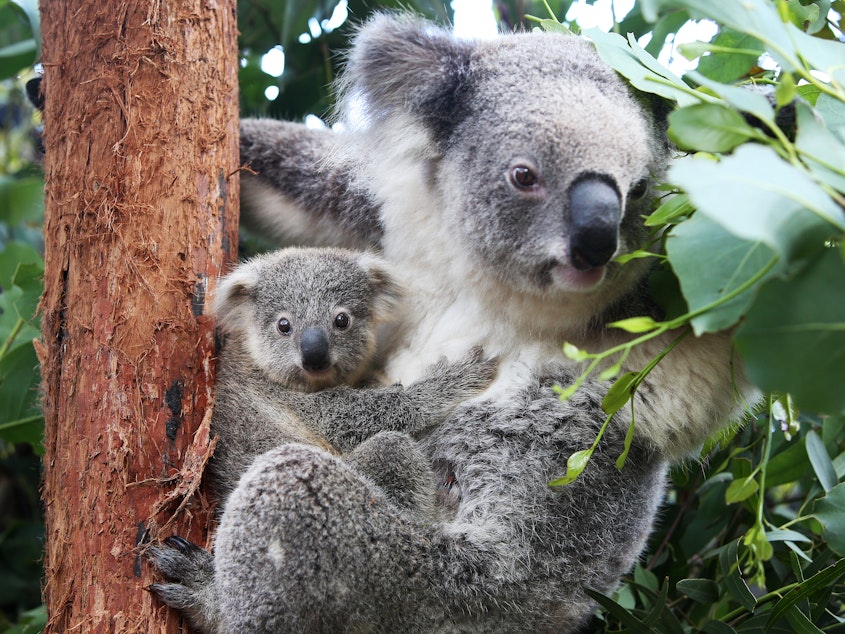Koalas are now officially an endangered species in parts of eastern Australia

Government officials have declared koalas endangered across much of eastern Australia, citing the impacts of drought, bush fires and habitat loss on the country's dwindling marsupial population. But some conservation groups said the action was too little, too late.
Environment Minister Sussan Ley announced on Friday that she is increasing protection for koalas in New South Wales, Queensland and the Australian Capital Territory by changing their status from vulnerable to endangered. The government is also providing millions of dollars in conservation funding and seeking states' approval for a national recovery plan, she said.
"Together we can ensure a healthy future for the koala and this decision, along with the total [$53 million U.S.] we have committed to koalas since 2019, will play a key role in that process," she said.
The move comes a decade after koala populations in those three regions were first classified as vulnerable, meaning they faced a high risk of extinction in the wild in the medium-term. Their endangered status connotes a much more imminent risk.
Without urgent government intervention, New South Wales' koalas would become extinct by 2050, a parliamentary inquiry released in June 2020 found.
Sponsored
The Koala population has seen a dramatic decline
Koala numbers have dropped dramatically in recent years, due to climate-driven weather events and rampant land-clearing for agricultural and urban development. Koala populations in Queensland and New South Wales, for example, were recently found to have decreased by 50% or more in the last two decades.
The deadly bush fires in 2019 and 2020 — which scorched millions of acres over several months — further exacerbated the decline. Some 60,000 koalas were "killed, injured or affected in some way" by the fires, according to a report commissioned by the World Wildlife Fund Australia.
"The bushfires were the final straw," Josey Sharrad, a campaign manager with the International Fund for Animal Welfare, said in a statement issued Friday. "This must be a wake-up call to Australia and the government to move much faster to protect critical habitat from development and land-clearing and seriously address the impacts of climate change."
The country lost 30% of its total koala population between 2018 and 2021, according to a report from the Australian Koala Foundation. That loss was particularly stark in New South Wales, which saw a 41% decline.
Sponsored
While the bush fires contributed to the population drop, AKF Chair Deborah Tabart said last year that they were far from the only driver.
"We have witnessed a drastic decrease in inland populations because of drought, heat waves, and lack of water for Koalas to drink," she said. "I have seen some landscapes that look like the moon — with dead and dying trees everywhere."
Land-clearing has been a major factor
Land-clearing has ramped up in recent decades, with the World Wildlife Fund Australia noting that it's increased 13-fold in New South Wales since the government weakened native vegetation laws in 2016.
Conservation and animal welfare groups have long urged Australia's government to take more action to protect the species.
Sponsored
In April 2020, WWF-Australia, the International Fund for Animal Welfare and Humane Society International jointly called on the federal government to reclassify koalas as endangered, saying the move would mobilize funds, spur public support and increase protection for the forests and woodlands that koalas call home.
The Australian government has allocated some funding for koala protection efforts in recent years.
It committed $13 million in 2019 for habitat protection and restoration, health research and medical support and the federal koala monitoring program. And last month, the government announced it would direct another nearly $36 million toward recovery and conservation initiatives over the next four years.
Conservation groups welcome the reclassification but say more action is needed
The three groups welcomed Ley's announcement on Friday, but stressed that the status change alone is not enough to save the koalas.
Sponsored
They called on the government to take a stronger stand against deforestation and refocus its efforts on forest protection and restoration, saying its words would be empty without action.
Tabart, with the AKF, called the reclassification "nothing but a token gesture," saying it was "too little, too late" and calling for meaningful legislative change. The organization has long advocated for a Koala Protection Act, which would focus on protecting koala trees from developers.
"A status change is just a word," the AKF tweeted. "It does nothing legally to stop land clearing, which is the key reason for Koalas becoming homeless and then getting sick with disease."
The foundation also criticized the government for choosing not to list koalas as endangered in Victoria and South Australia, saying the decision shows "how out of touch our political leaders are with the current state of the koala."
Sharrad, with the International Fund for Animal Welfare, praised the decision but also described it as a "double-edged sword."
Sponsored
"We should never have allowed things to get to the point where we are at risk of losing a national icon," she said. "If we can't protect an iconic species endemic to Australia, what chance do lesser known but no less important species have?" [Copyright 2022 NPR]



